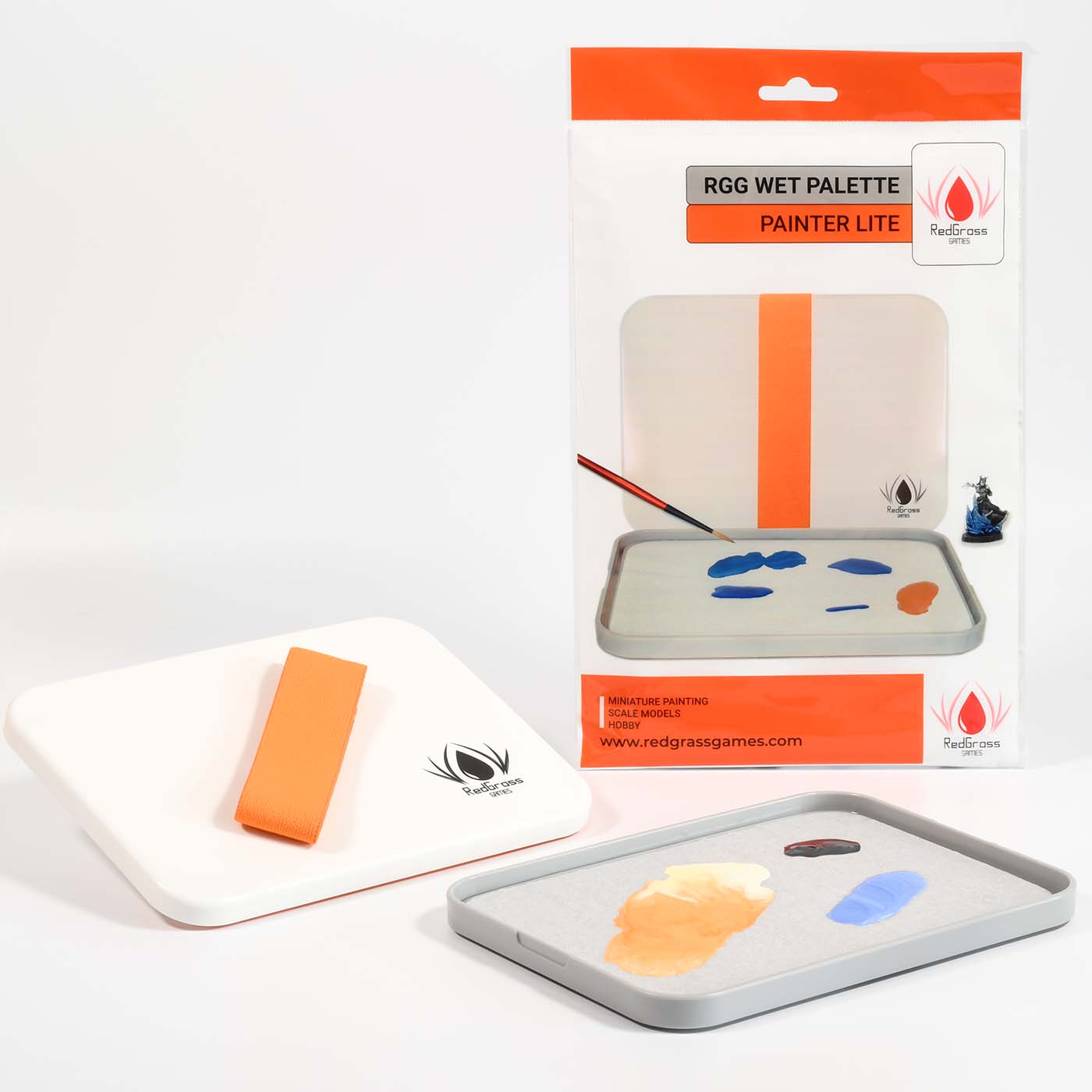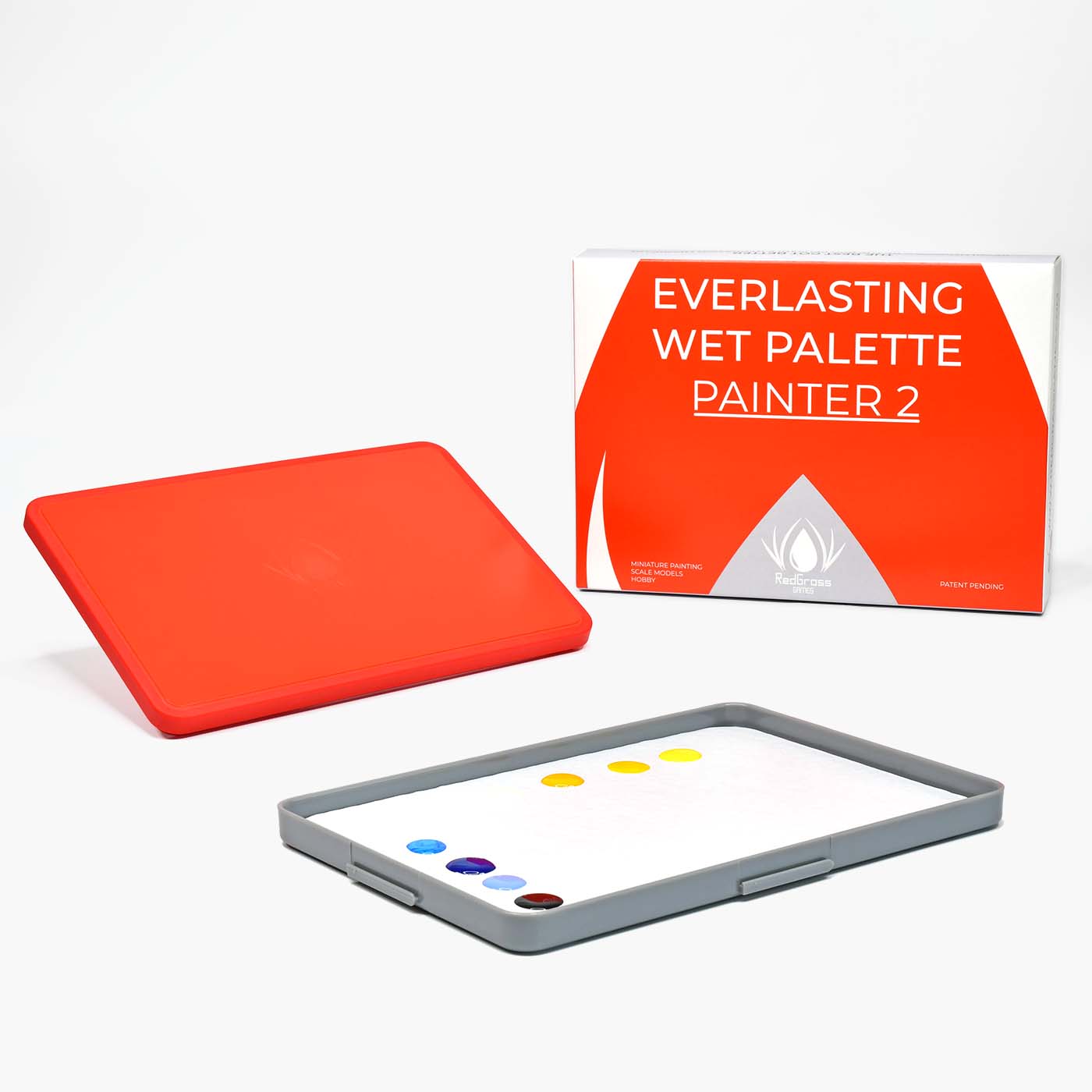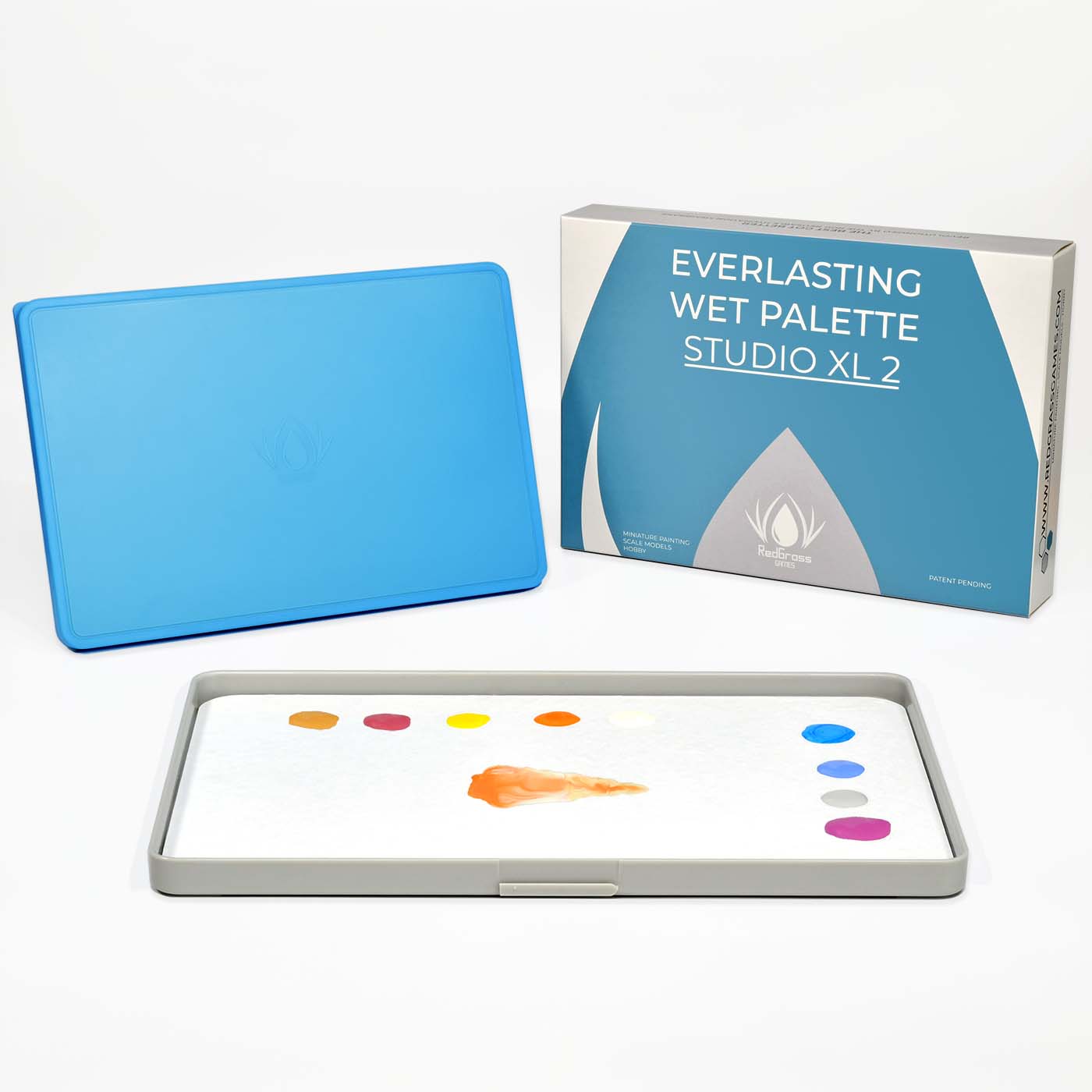How to use a wet palette?
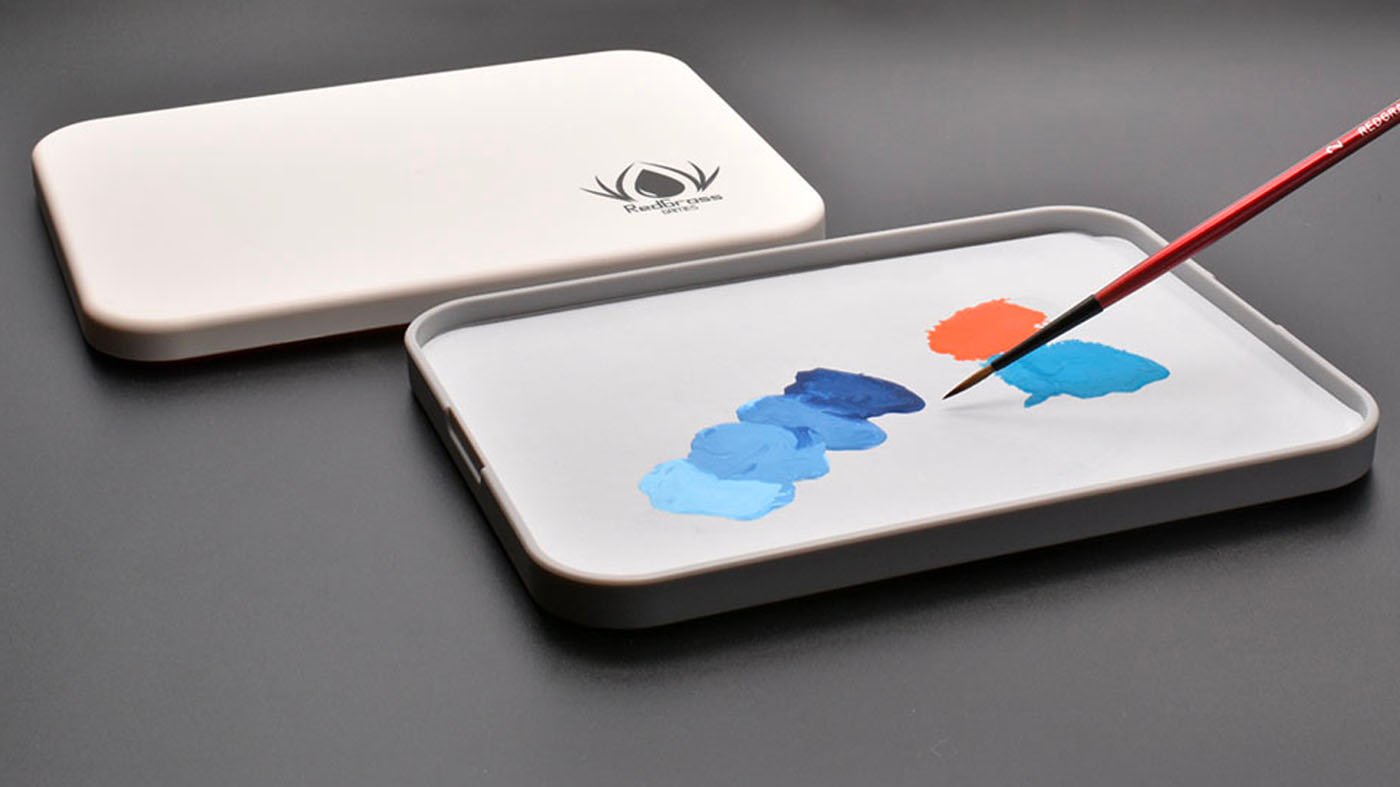
A wet palette is an indispensible tool for miniature painters using acrylic paints, which is why a very common question in miniature painting is ‘ how to use a wet palette? ‘. This is the focus of this article so read on!
New to using a wet palette? Curious to try one? Or maybe you have a question about the palette you already have?
This guide is for you! We have assembled this FAQ based on questions we get about wet palettes, so hopefully can prove useful to you. Use the table of contents below to help navigate to any particular question you might have on how to use a wet palette.
How Do I Use a Wet Palette? Table of Contents
What is a wet palette?
Put simply, a wet palette helps keep your acrylic paints workable for longer. Physically, it’s a moisture pad or foam, with a semi-permeable paper palette on top, sealed inside a case.
Out of the pot, acrylic paints dry very quickly compared to other paints. This can make more advanced techniques trickier to try, such as blending and glazing. A good wet palette can keep your paint moist, thinned, or even stored for freshness between painting sessions. Using this tool will vastly improve your enjoyment of acrylic painting your miniatures, as well as the technical finish.
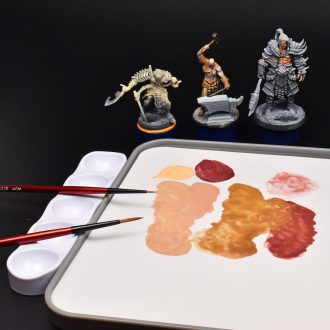
How do I set up a wet palette?
Setting up a wet palette is simple. Many come with everything you need in one package, and guidance notes.
Place the foam or sponge inside the container. Soak the foam or sponge in water- we recommend 7 CL/2.4 oZ for the Painter size or 15 CL/5 oZ for the Studio size. The foam will expand to accommodate the moisture. Then, place your hydration paper or reusable membrane onto the moistened foam. Lay it flat onto the pad and smooth out any bubbling or crinkles that may occur. You can use a card, or the side of your palm. That’s it! Now, you are ready to paint using a wet palette.
Just make sure that when you added your paper or membrane, there is no excess water. Water on the surface of the paper or membrane could overly-dilute your paint mixes.
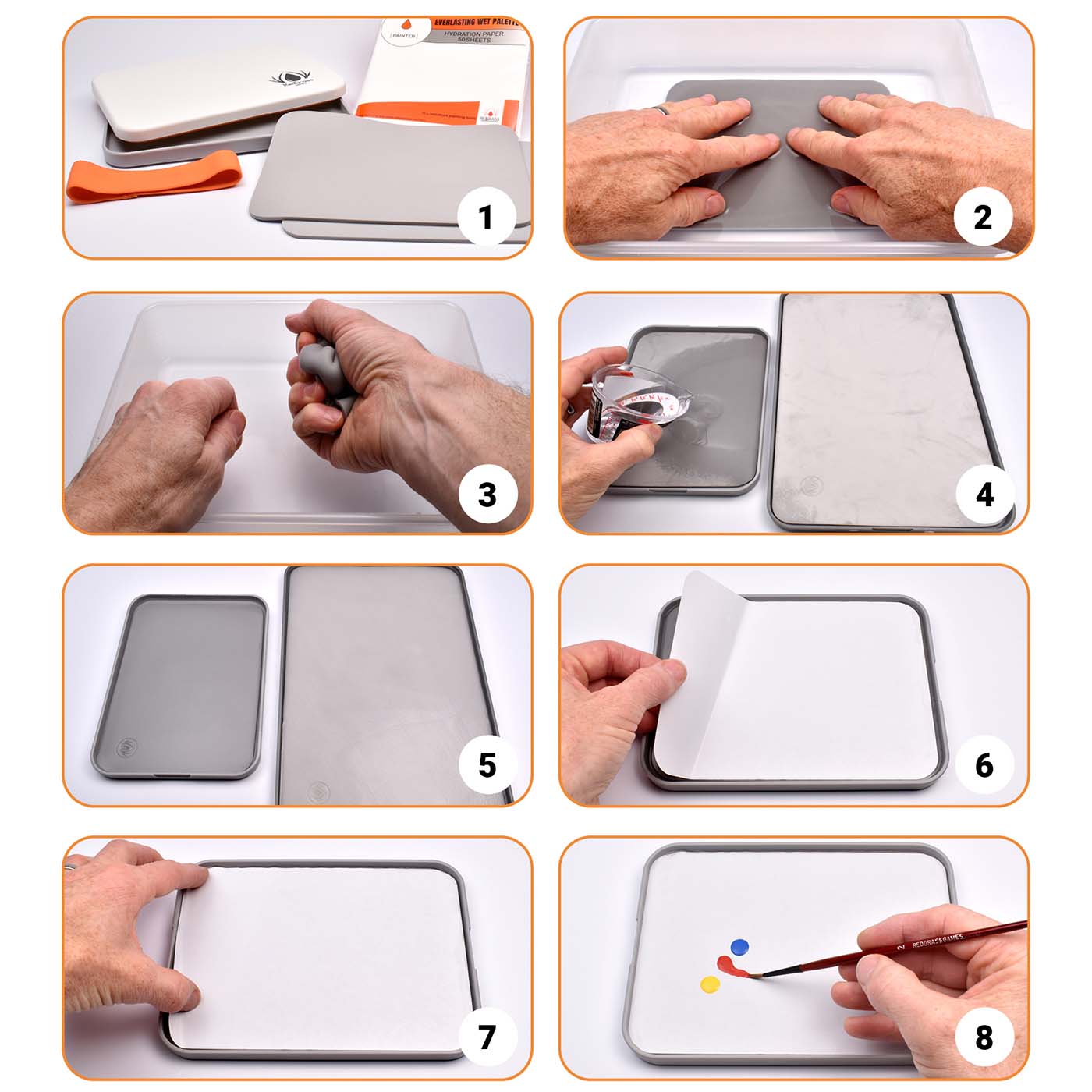
How Much Water Do I Add? Do I Need To Keep Adding Water?
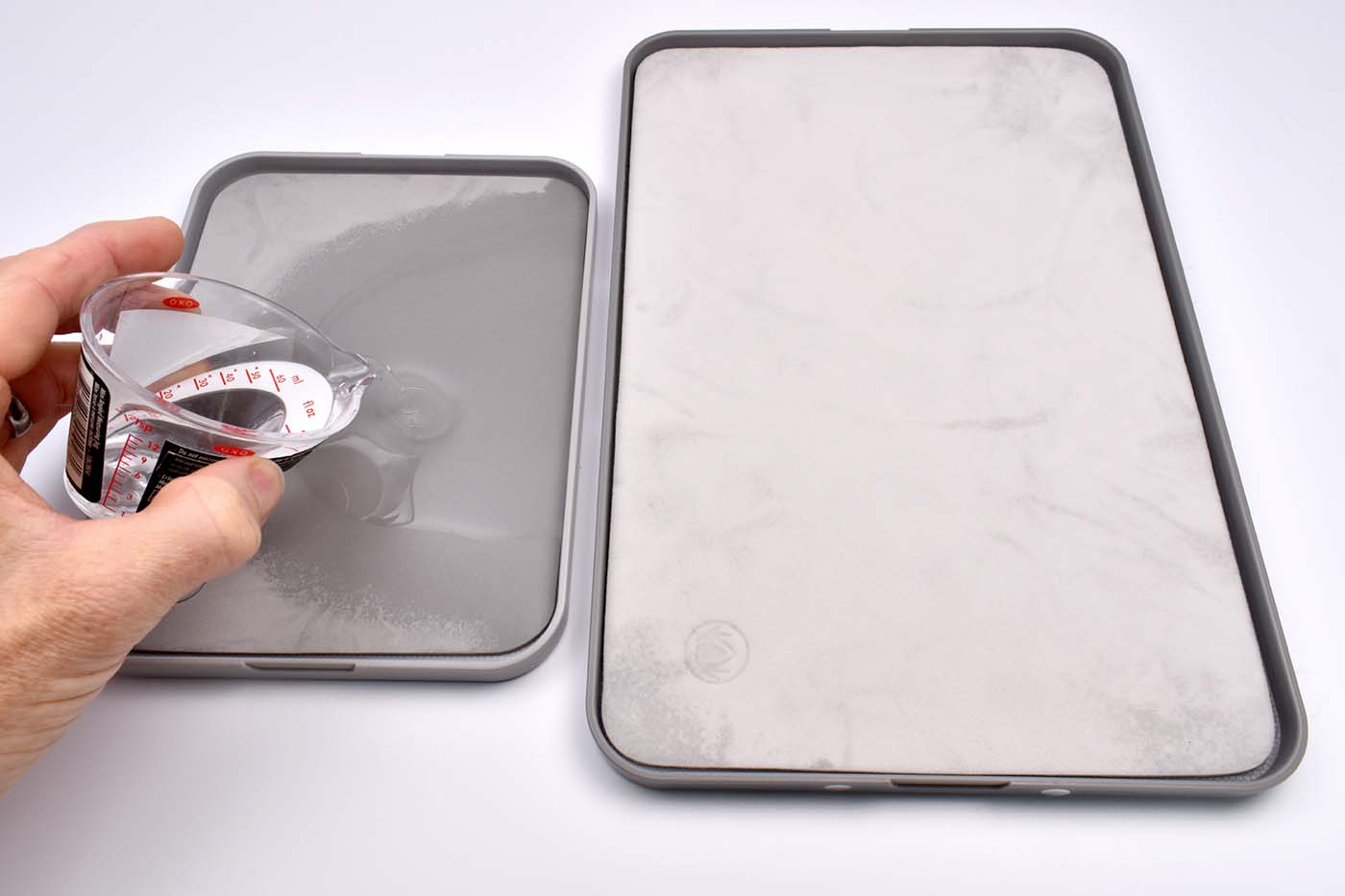
We suggest 7 CL/2.4 oZ for the Painter size or 15 CL/5 oZ for the Studio size. With time and proficiency you may prefer a drier or wetter palette experience. So, 'Your mileage may vary' as they say! If you have long painting sessions, you may need water 'top ups'. For optimised performance, I find a pipette of water every 2 hours in normal conditions enough.
How Do I Use Paint On a Wet Palette?
Firstly, shake your pot of paint well. When not in use, paints can ‘separate’ and this makes their consistency poor. Next, instead of applying the paint directly to the model, instead put it on the wet palette. The controlled capillary action of the paper or membrane will ensure enough moisture to keep the paints from drying out. Whilst on the palette surface I like to test the consistency. With a brush, I like to run it through the paint to smooth it out and detect impurities. You can now also add any other colors, water, or mediums you want. The reusable membranes from Redgrass are especially good as a surface for blending.
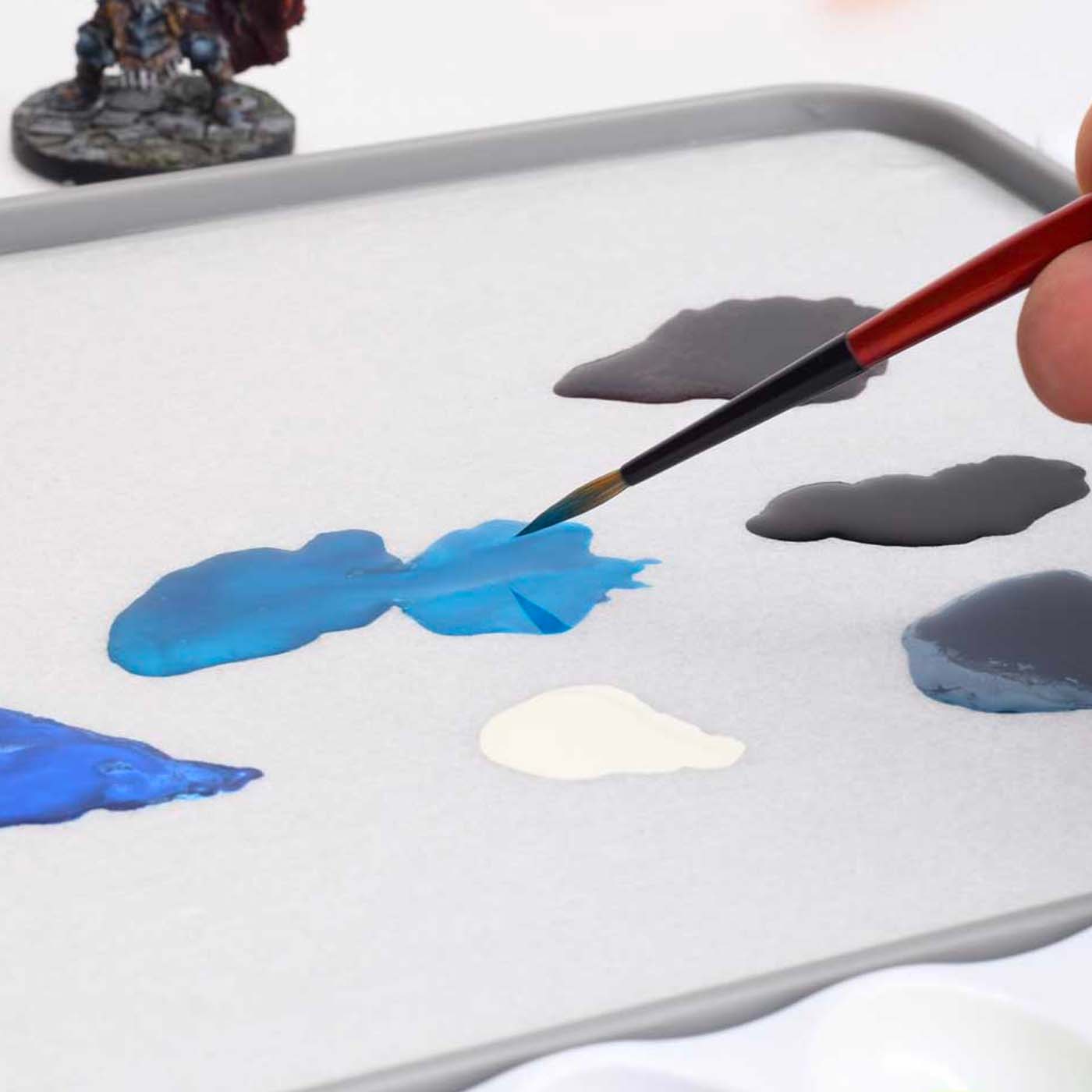
Can I use metallic paints?
Short answer, yes you can!
However, some extra care may be necessary. The tiny metallic flakes can seep into things you don’t want. Over time, hydration papers will lose efficacy- that is when metallic paints could contaminate the rest of the palette. Use metallic paints on newer papers and membranes. The reusable membranes from Redgrass Games are especially good for metallics. Avoid over-watering your wet palette which could cause metallics to ‘bleed’ into other paints. If all else fails, you can use the wavy accessory for metallics, or a dry palette. These tools are also better for non-acrylic miniature painting, such as oils or inks.
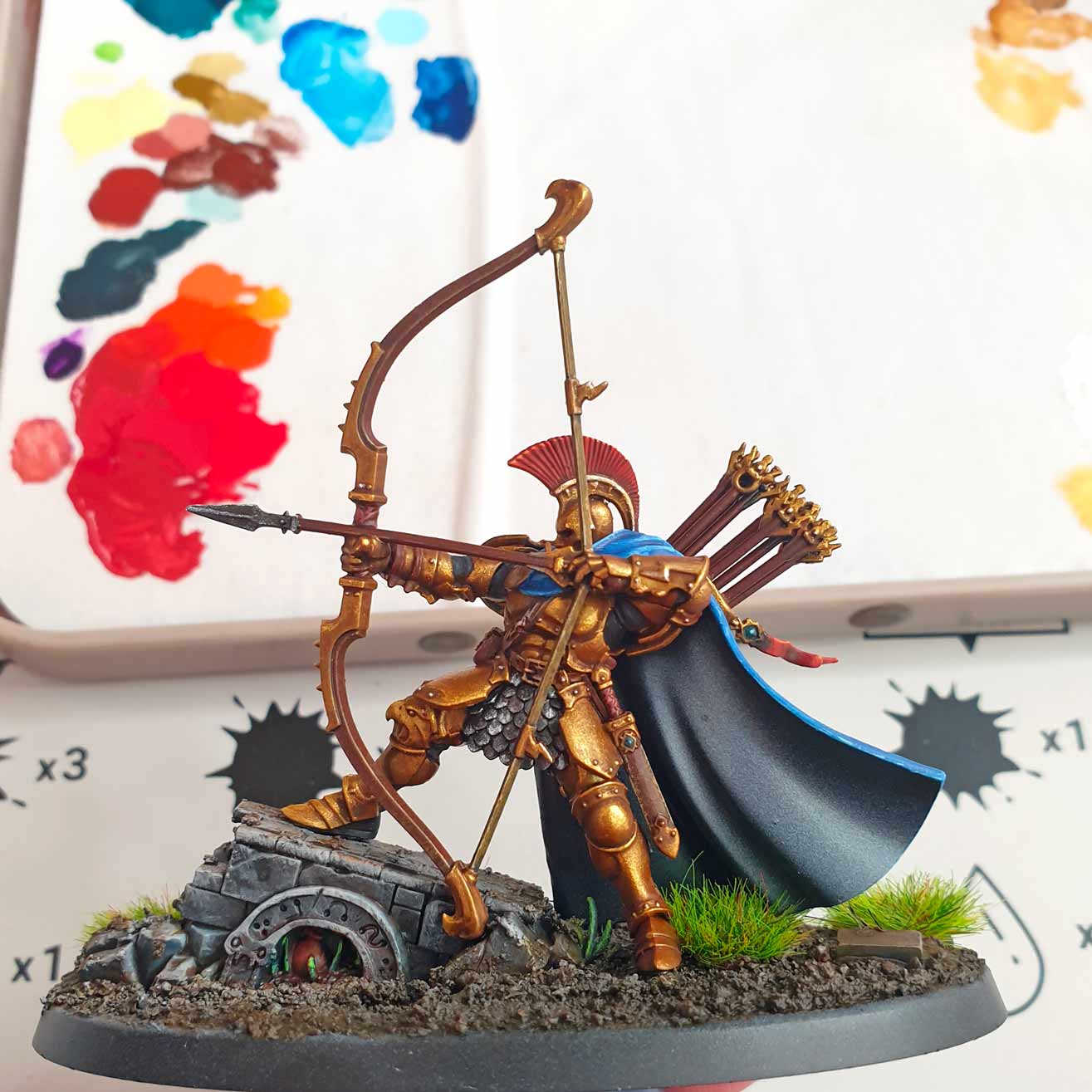
How Do I Clean My Wet Palette?
This may depend on the materials. For the Redgrass Creative wet palette series, simple warm, soapy water will suffice. Handwash your palette case as you might wash the dishes in the sink! Stubborn acrylic paint, that is fully cured, can be scraped or peeled off. Over time, staining may appear. However, this is ultimately cosmetic so it can remain without affecting performance. The mould-resistant foam can be handwashed in a similar fashion. If you are using RGG reusable membranes, the unused paints can be cleaned away with a damp cloth. If you are using traditional palette papers, used ones should be disposed of; they will not survive cleaning in anyway.
It is not advised to use very hot water or clean the case and foam in a dishwasher.
What Do I Do If My Palette Is Mouldy?
Bacteria and mould are natural and pervasive parts of life. Even the relatively clean hobby space will contain microbes in the air and water that can encourage mould growth. Even something ‘mould-resistant’ like the RGG foam cannot be 100% mould-proof. We recommend you change your water regularly, daily in hot conditions. It is a good idea to have two foams- one in use and the other rotated in during its cleaning. Cleaning the foam with warm, soapy water should suffice to destroy most moulds. If that fails, try a soak in a vinegar solution. The same is true for any mould growth on the palette case.
How Long Does A Wet Palette Last?
With care, there should be no limit to how long a good-quality wet palette could last. Certain parts however, like the hydration sheet, or if you use a sponge, may wear out over time. But this is normal. Hydration sheets should be changed regularly, and reusable membranes have a better life expectancy. If you purchase a Redgrassgames wet palette, it will feature a mould-resistant foam rather than a sponge, these can last much longer with care. When a palette uses specially-formulated resistant plastics for its casing, they can last years.
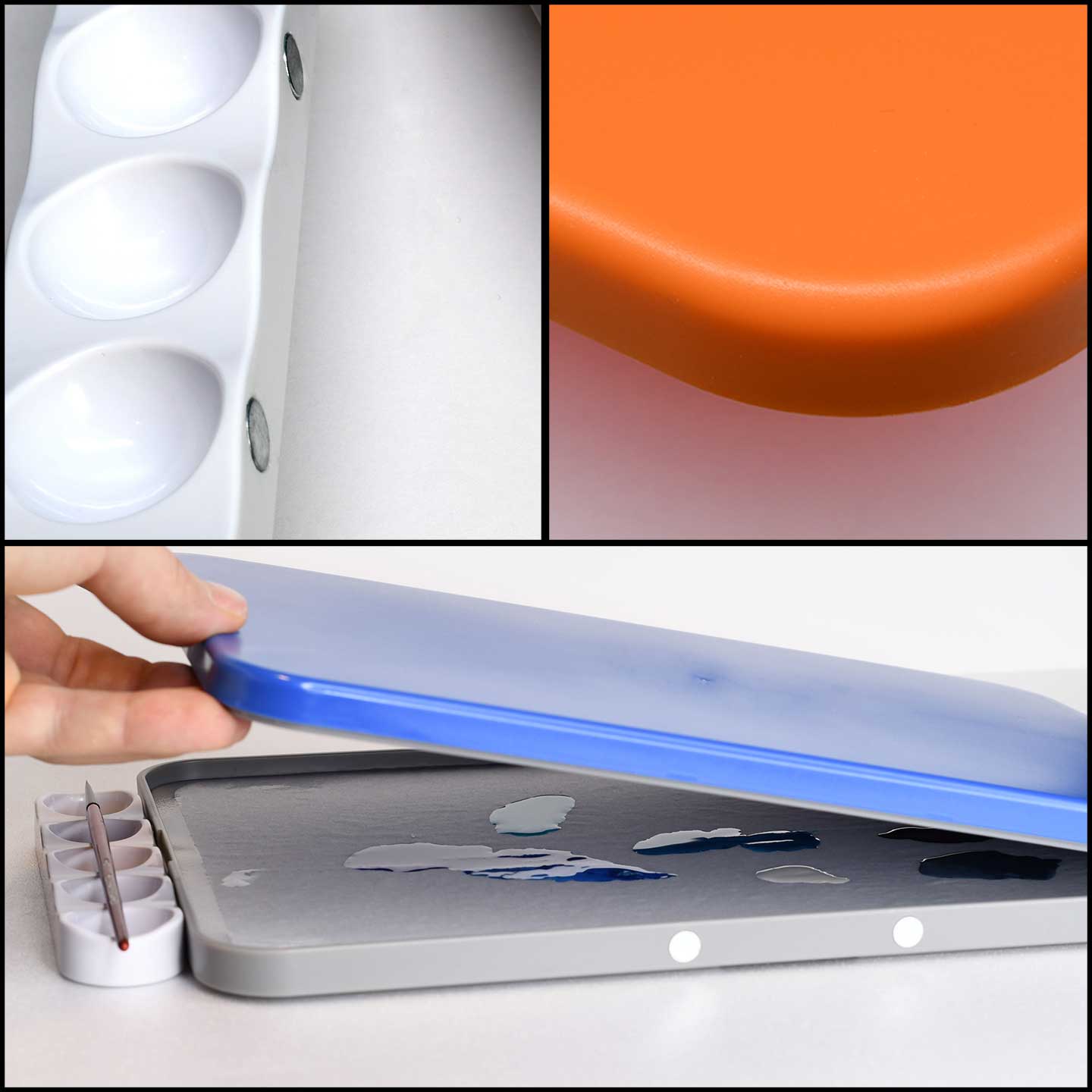
What Is The Best Wet Palette?
The Redgrassgames Everlasting Wet Palette series is endorsed by thousands of painters and pro-painters around the world. Praised for their quality and reliability, they are promoted by artists like Angel Giraldez. We are also used by pros like Craftworld Studios, Roman Lappat, Squidmar, Lil Legend and many more.
Redgrass Creative’s palette lineup features something for everyone, with our Lite and V2 series. The Painter Lite is a perfect pick for beginners or those who paint on the go. It’s easy to carry around and great for getting started with your painting hobby.
For a bit more room to mix and match your colors, the Painter V2 is your go-to. It’s an excellent choice for various painting projects, offering a bit more space without being too bulky.
And for the painters who really get into their work, especially those tackling commissions or enjoying longer painting sessions, the Studio V2 is just what you need. It’s designed for more extensive use, providing ample space for all your color mixing needs.
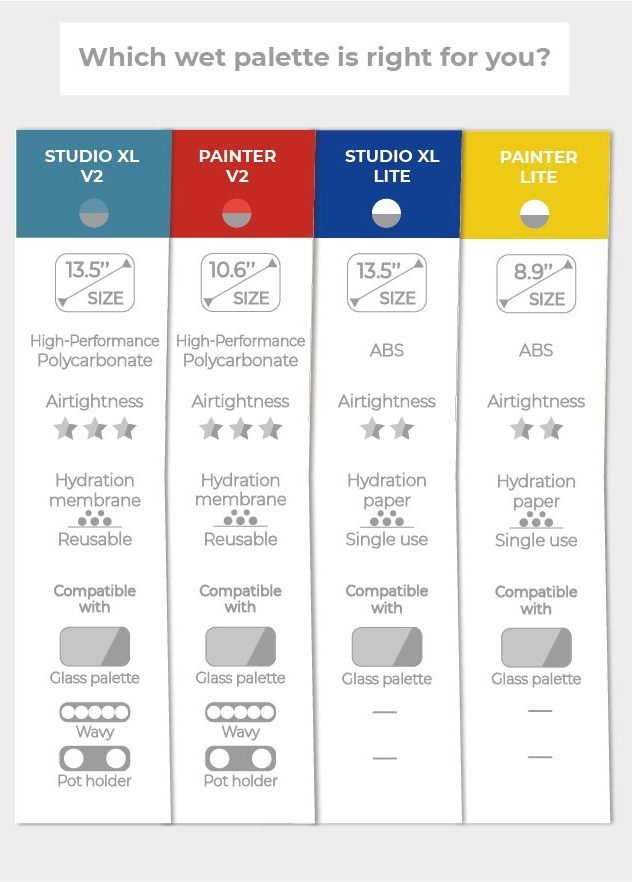
How Do I Make A Wet Palette?
Perhaps before seriously investing in a premium tool, you want to try wet palette painting. This is understandable! For many, a DIY homemade palette is a right of passage. You can make one relatively easily at home. Place a damp sponge inside an appropriately-sized tupperware box, with baking parchment as the hydration paper. For a first foray, this will serve to show you what wet palette painting can do. Over time you may feel a homemade one lacks the quality and capability of a premium tool. At which point come back to this article!
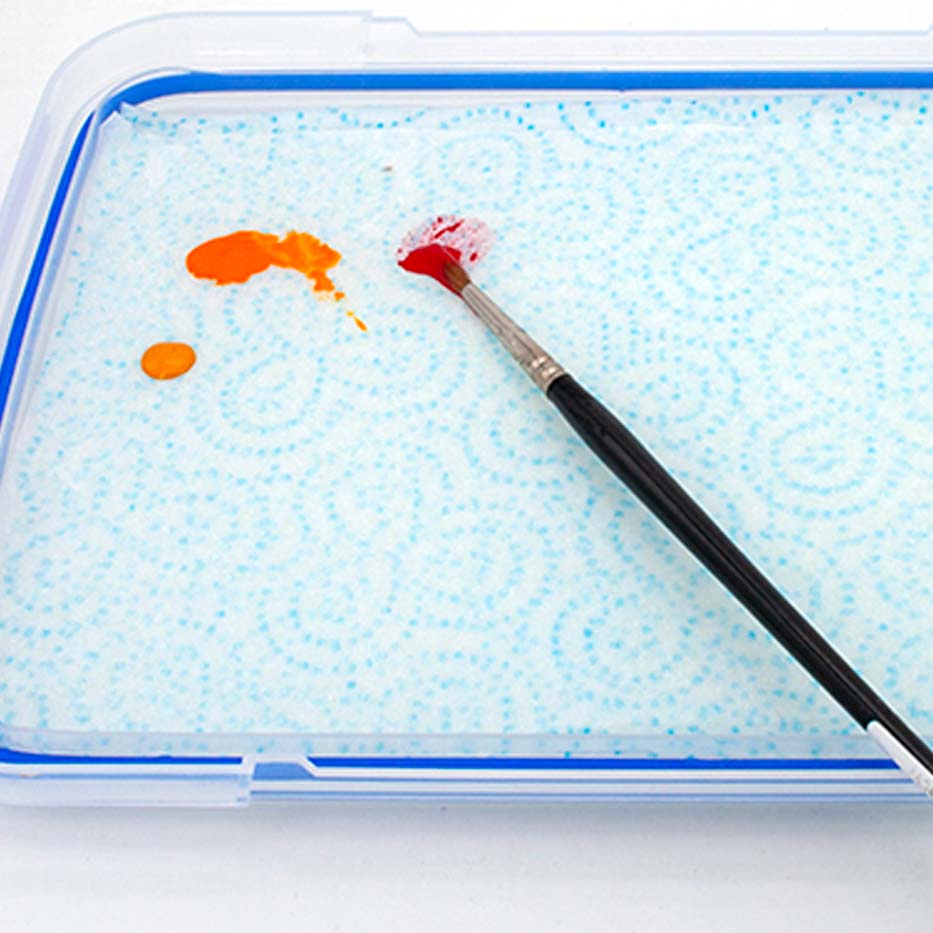
Is A Wet Palette Worth It?
Short answer- Yes!
If you use acrylic paints for miniature painting, a wet palette is totally worth using. Using it, will save you time & money for your hobby in the long run. Acrylic paints dry extremely quickly when out of the bottle. This can make more advanced painting techniques like blending and glazing harder to achieve. Further, when army painting, such quick drying times can really frustrate your ‘batch-painting’ process. Using a wet palette first will significantly increase the painting time you get with your acrylic paints. When sealed between painting sessions, the palette can also keep acrylics fresh for days. This means that the next time you sit down to paint you can start straight away, without wasting any paints that have dried out -and wasted your money in the process. Just remember to keep your palette sealed up between uses to stop the paints air drying.
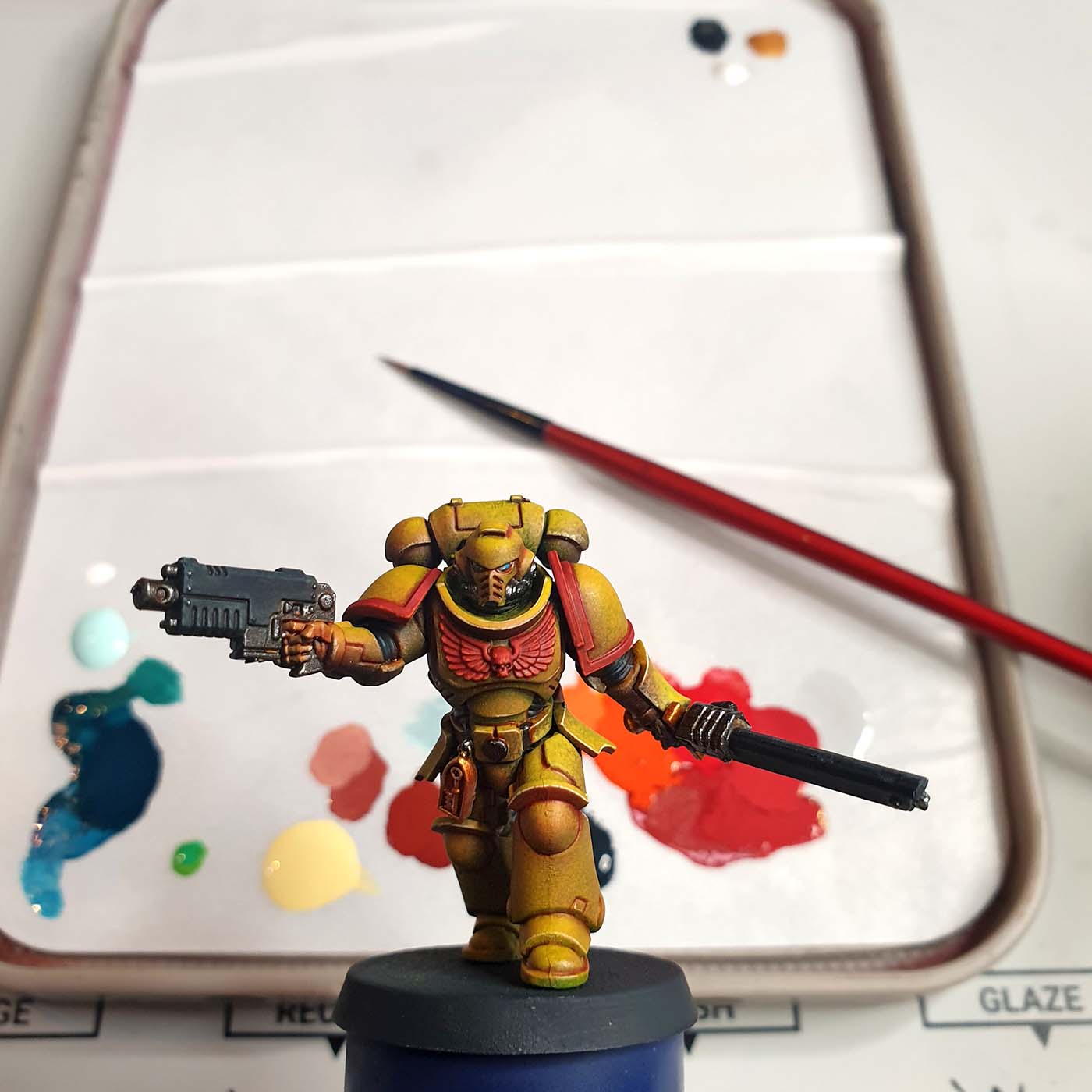
Is Condensation Normal?
It is absolutely normal for some condensation to accumulate in a sealed case between painting sessions.
Condensation occurs when warm air meets cold surfaces. Like cold drinks on a hot day! Dramatic differences in temperature is more likely to cause condensation, rather than lack of airflow. Leaving the lid off your palette could minimise condensation, but will speed up paints drying out. Some painters like to leave their palette in the refrigerator, although this doesn’t necessarily stop condensation. Storing your wet palette in a cool, dry place is best. Carefully remove your lid at the start of a painting session, so that any condensation doesn’t fall into your paint.
How to Use a Wet Palette: Video Tutorial
In this video, pro-painter Oscar Lars shows us how to set up and use a wet palette. In it are many of the tips we suggest in this article! Please watch and enjoy.
How to Use a Wet Palette
We hope this article has covered all your questions on how to use a wet palette! They have so many uses and make your miniature painting life so much easier, so we want to make it as easy as possible for you to add one to your hobby space.
If your question hasn’t been answered here, send us a message on social media and we will be happy to assist!

